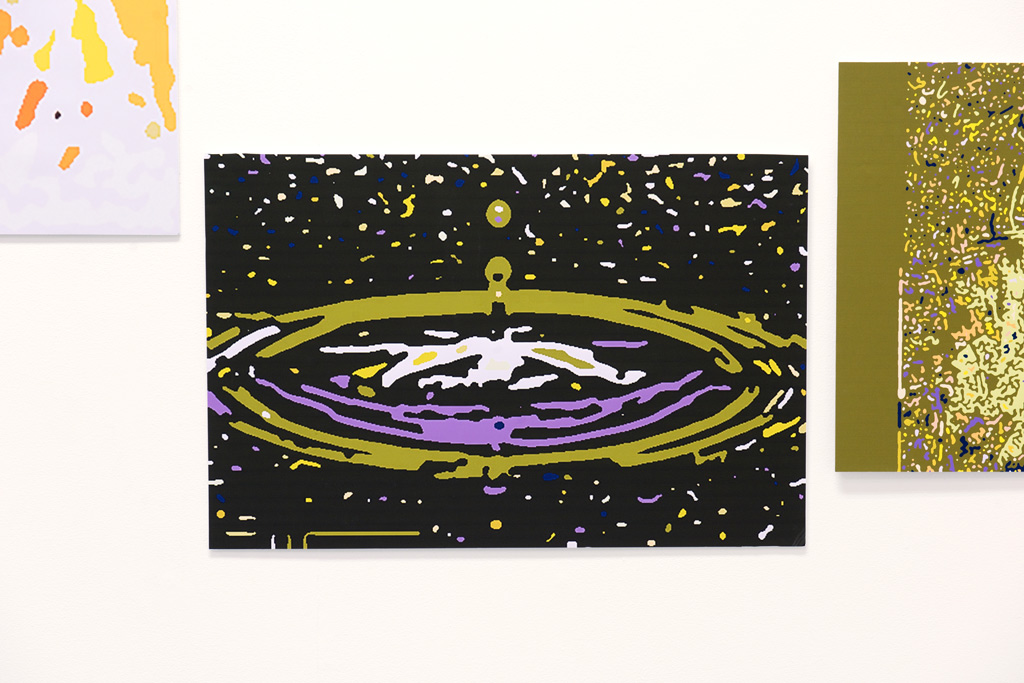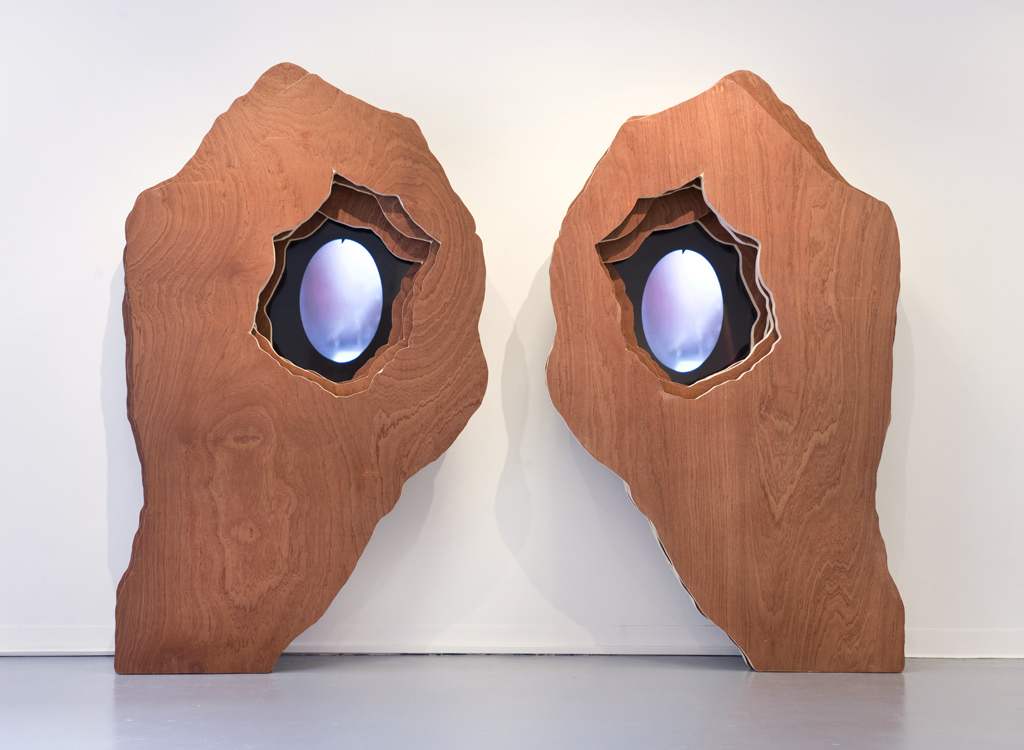Valence
Beth Allsopp, Katerina Antoniou, Jed Buttress, Jasmine Matthews, Callum Todd, Olivia Turner
20-30 September 2017
‘Valence’, 2017, installation view. Photo: Colin Davison
Valence’, 2017, (foreground) Callum Todd, Energy Production, 2017, wood, potatoes, light emitting diodes, electrical wire, copper and zinc, (background) Jasmine Matthews, ‘Deterministic Melge’ series, 2017, digital prints. Photo: Colin Davison
Jasmine Matthews, ‘Deterministic Melge’ series, 2017, digital prints, dimensions variable. Photo: Colin Davison
‘Valence’, 2017, installation view. Photo: Colin Davison
‘Valence’ is an art/science collaboration and investigation between the Fine Art department and the Wellcome Centre for Mitochondrial Research (WCMR) at Newcastle University. WCMR is a leading international research centre at Newcastle University Medical School that aims to transform the lives of patients with mitochondrial disease.
Fine Art at Newcastle University, currently ranked top in the UK for art and design, is very actively engaged in cross disciplinary work between artists and people in other fields.
Mitochondria are the energy producing components of the cells of animals and plants and contain their own DNA. Mutations in mitochondrial DNA can cause an energy deficit resulting in mitochondrial disease that predominantly affects the brain, liver, muscle and heart causing symptoms such as epilepsy, stroke, and muscle weakness. The WCMR supports patients with mitochondrial disease and conducts pioneering research into the diagnosis, treatment and prevention of the disease including development of new IVF techniques which may potentially prevent women affected by mitochondrial DNA disease passing the condition on to their children.
Valence is an artist residency programme with the WCMR research team involving six fine art students and WCMR staff who have been working with scientists and patients developing work that offers a range of insights into this vital body of research and how it is perceived and understood by scientists, patients and their families. The artists are: Beth Allsopp, Katerina Antoniou, Jed Buttress (undergraduate students), Jasmine Matthews, Callum Todd (who graduated this year), and Olivia Turner (PhD researcher).
Beth Allsopp’s fabric sculptures are a response to the effect mitochondrial disease can have on the physical activity of its sufferers. Reminiscent of comfortable pieces of furniture, their shapes and patterns are drawn from microscopic cellular imagery of muscle fibres. A patient’s comment about having to sit and take regular breaks to simply do their housework influenced her to create work referencing this waiting and passing of time.
In Untitled (2017), Katerina Antoniou has taken sections of microscopic images of human and mouse tissue, turning them into a digital print through layering and distorting, as part of the process of thinking about ethical and scientific issues raised through using non-human tissue in medical research.
Jed Buttress works predominantly with sculpture, printmaking and digital media. In Vitro (2017) is a response to public scepticism about mitochondrial research by embodying ill-informed perceptions of science. A dark room is lit by the actinic light of illuminated wires descending from the ceiling to a glowing box that contains the ghostly form of an unborn foetus, an image at once beautiful and disconcerting.
Jasmine Matthew's work involves collection and evolvement of items, often working with things which are classed as refuse. She uses data collection to reflect on human identity within a medical system. In Deterministic Melge (2017), randomly generated digital images are combined with a colour scheme that is based on the urinary samples of volunteers in medical research.
Callum Todd is interested in sustainability and its involvement within architecture and design. Many of his sculptures are created from natural and living materials, meaning the element of 'time' is of significance. Energy Production (2017) uses a ‘battery’ of potatoes as a power source for an illuminated sign to reference the transference of energy from food to body, a process that is faulty in sufferers of mitochondrial disease.
Olivia Turner’s work focuses on symptoms associated with mitochondrial disease that involve impaired vision and hearing, as well as speech and swallowing difficulties. The video installation Eyepiece (2017) depicts an endoscopic procedure; a thin flexible tube and camera is used to examine the oesophagus. This is a common procedure experienced by patients with mitochondrial disease. In Eyepiece Turner is exploring the relationship between perception, communication and the body.
The exhibition and interactive symposium, on Wednesday 27 September, present the first phase of this investigation to the public, including discussion and response from patients, scientists, clinicians, artists and others working in the humanities. The outcomes of this will be published online and the exhibition will be further developed and toured as the residency progresses.
Valence Symposium: Vane and Ampersand Inventions
Wednesday 27 September 1:30-5pm
As part of the Valence project there is an interactive symposium involving artists, scientists, clinicians and patients. The event starts at Vane with an opportunity to talk to the artists and is followed by presentations and discussion at Ampersand Inventions.
Evening reception:
Wednesday 27 September 5-8pm
Following the symposium, we are pleased to invite you to an evening reception for ‘Valence’, 5-8pm.
The exhibition is supported by:
Welcome Trust
Newcastle University Institute for Creative Arts Practice
Newcastle University Humanities Research Institute
Take a video tour of the exhibition
Share this page












